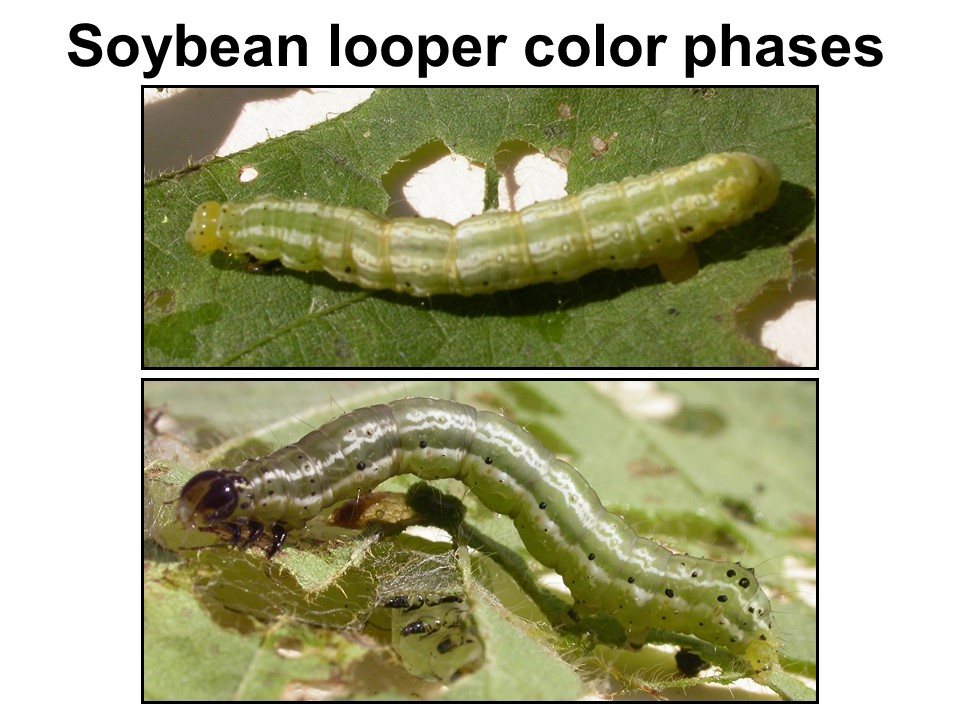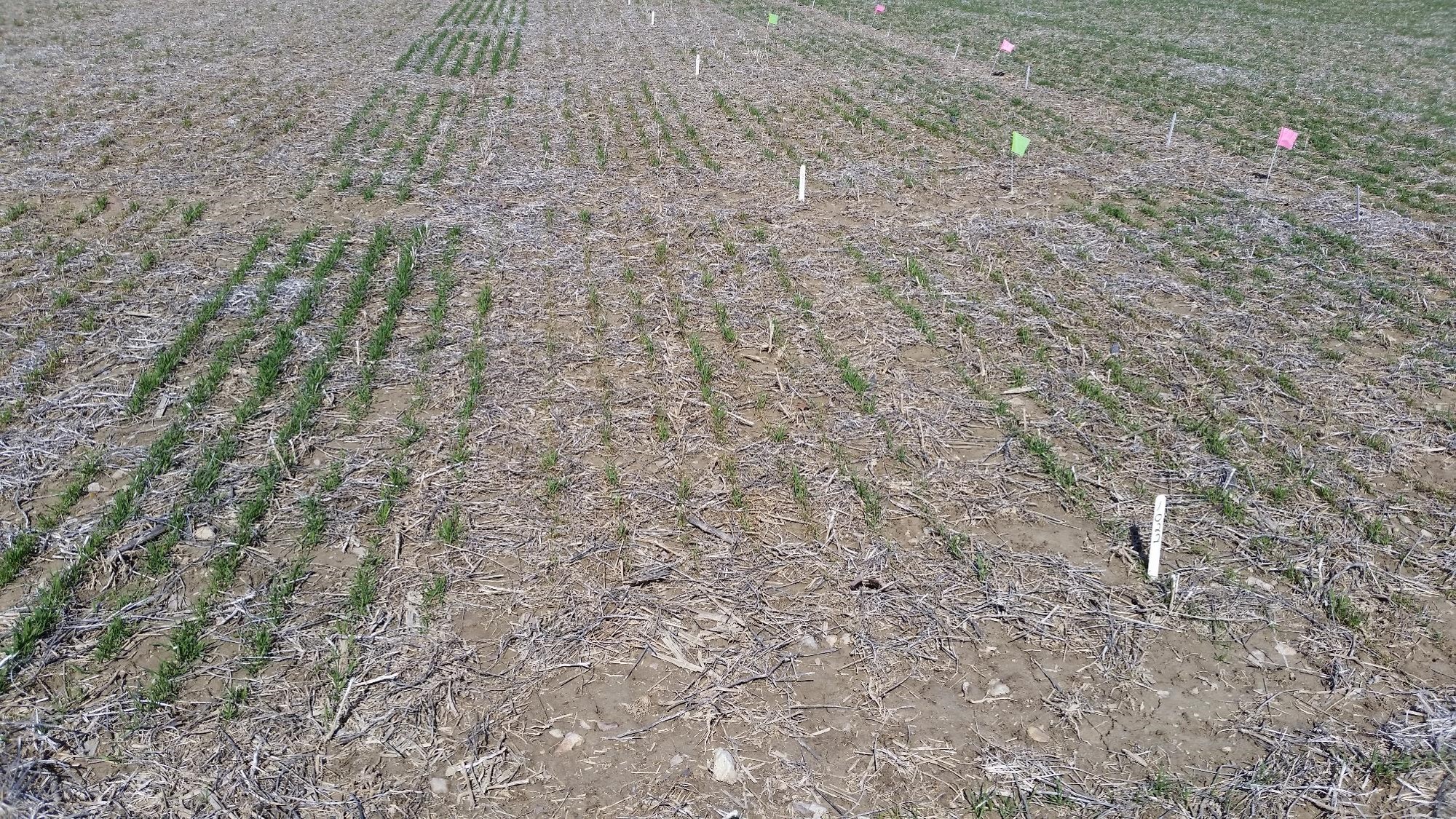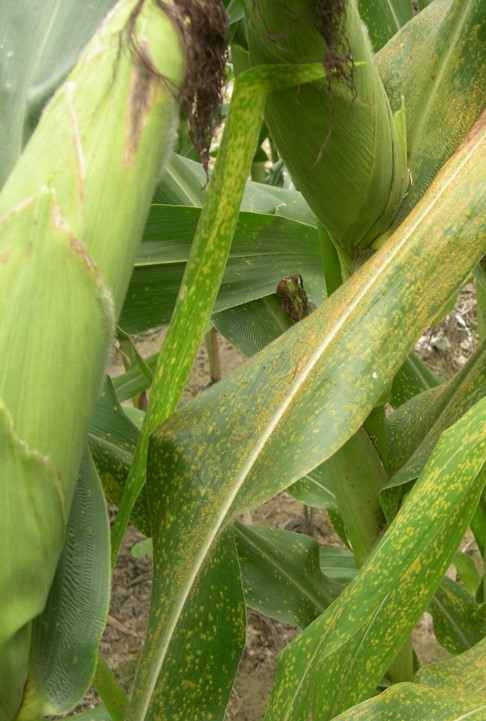I have gotten reports that soybean loopers are already infesting soybean fields in North Carolina in large numbers. This is basically about a month earlier than we normally see them in this area of the US. Loopers migrate from the south and typically infest fields in Virginia in early to mid September, but based on what is happening in NC, we should be on the lookout.
We are also in a high risk environment for having looper infestations. We usually have more problems with them in dry seasons, and they most often develop in soybean fields that have been previously treated with pyrethroids. Our current research is proving what we have been suspecting—that pyrethroids are non-selective insecticides which kill many of the natural enemy species that feed on looper eggs and small larvae—which if undisturbed, can prevent outbreaks in many situations. So previously treated fields are at the highest risk to loopers.
If we begin to hear about infestations in Virginia, we will post updates and include some recommendations in terms of thresholds and products that will work best. But generally, you cannot get control of loopers with pyrethroids—none of them—so you will have to turn to non-pyrethroid options, and there are several.



